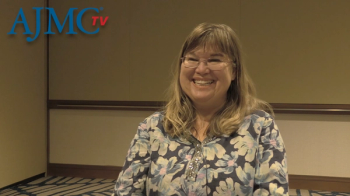
Persistent Social and Racial Disparities Are Hindering the Fight to End HIV
Higher rates of HIV can be seen within specific communities, particularly minority communities, along with a systematic bias taking place in policy and medical settings, noted Greg Millet, vice president at the Foundation for AIDS Research (amFAR) and director of amFAR’s Public Policy Office, on day 2 of AIDS 2020.
“Social determinants of health are associated with greater disease within specific communities, particularly minority communities,” said Greg Millet, vice president at the Foundation for AIDS Research (amFAR) and director of amFAR’s Washington, DC—based Public Policy Office, during the plenary session on day 2 of AIDS 2020, “Casualties on the Road to Ending HIV: Context Matters in Addressing HIV Disparities.” “And we’re seeing this systematic bias taking place in policy as well as in medical settings. We are at a turning point right now in the United States that could somehow translate into policy.”
Millet addressed how disparities persist in the fight against HIV, detailing the disproportionate impact HIV has had on sexual and racial minority
“It doesn't matter if you engage in low-risk or high-risk [behaviors]. African Americans are more likely to have HIV or a sexually transmitted disease,” he stated. In a similar vein, despite engaging in comparable rates of unprotected anal sex and having fewer partners, black gay men still had higher rates of sexually transmitted diseases compared with white gay men.
He noted how important it is that the US government’s Ending the HIV Epidemic: A Plan for America is making it a point to address HIV in African American, Latino, Native American, and gay and bisexual men, as well as instituting efforts to scale up interventions for, and within, these communities. However, the possibility of these efforts being derailed still exists. Knowing what those hindrances are, Millet noted, can serve as a jumping-off point.
Social determinants of health (SDOH) are a sticking point, especially unemployment, access to health care, poverty, housing instability (ie, homelessness), and household size, and addressing them “might explain some of these disparities that we see,” Millet pointed out.
Study results that he presented detailed the SDOH most associated with new HIV infections. “Income inequality, families and poverty, and the percentage of segregation (black/white segregation) are associated with more HIV infections within particular communities,” he pointed out. Within black communities, however, poverty, vacant housing, unemployment, and isolation were more rampant.
Wealth and privilege play a role as well, in that the cost of living is often driving HIV-positive individuals from their homes, and most of them are minorities. In San Francisco, for example, between 2006 and 2014, close to 500 black gay men left the city compared with close to 200 white gay men. Other cities seeing similar migrations include Chicago, New York, and Washington, DC.
The coronavirus disease 2019 pandemic is unfortunately contributing to the effects of unstable housing for many African Americans with HIV, too, because this population is more likely to rent, stated Millet, and that is associated with the overhanging threats of mass evictions and higher rates of homelessness, both which increase risk for HIV.
Being homeless also ups the risk for HIV-positive individuals not achieving viral suppression, as evidenced by additional results Millet presented from San Francisco showing that those who sleep outdoors are less likely to be virally suppressed, as well as have a high median viral load. Black transgender women are especially affected by homelessness, in that only close to a quarter are virally suppressed, and a reason for such low numbers is their lack of stable housing.
“What are some of the associations that we might see with policy and health?” Millet asked. African Americans account for close to 13% of the US population, and 55% live in the South, he said, which is an area that has mostly not seen expansion of Medicaid coverage through the Affordable Care Act, coverage that has been shown to
“Failure of legislation to address known social factors is a plausible explanation, at least in part, for some of the observed disparities that we are seeing,” Millet continued when discussing how study results published in the New England Journal of Medicine show whites being favored for life-saving innovations over blacks. This includes access to antiretroviral therapies, in addition to pre-exposure prophylaxis.
These highest-risk communities, are being assaulted, he emphasized, by policies that do not enable easy implementation of the federal
- Health care professionals are not to be trusted
- HIV is a man-made disease
- HIV information is being held back
All of this contributes to a lesser chance of being tested for HIV, and to fix that, collaboration is paramount to see positive results among communities at risk for HIV.
“We need to make sure that communities are at the center of their response,” Millet concluded, “and at the center of providing solutions for some of these health crises that we are seeing.”
Newsletter
Stay ahead of policy, cost, and value—subscribe to AJMC for expert insights at the intersection of clinical care and health economics.















































